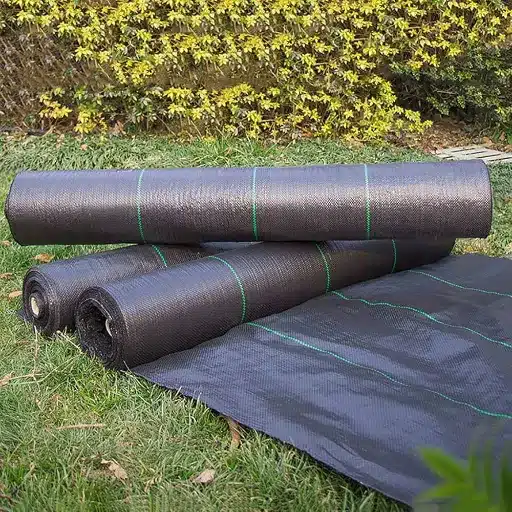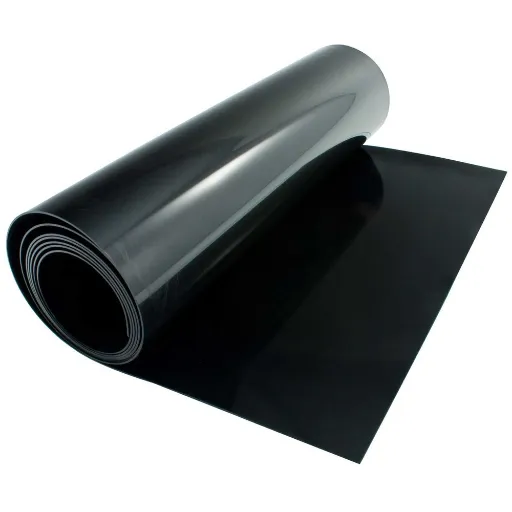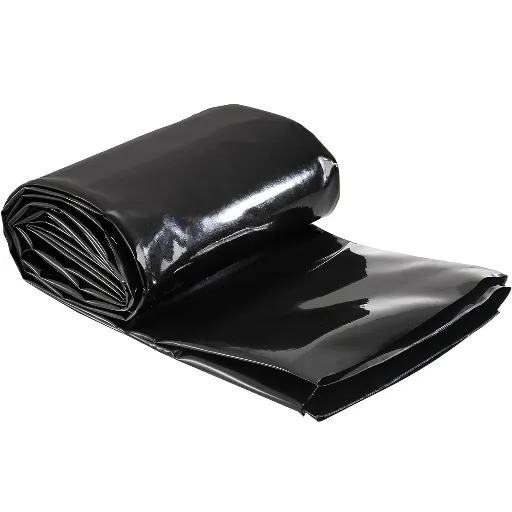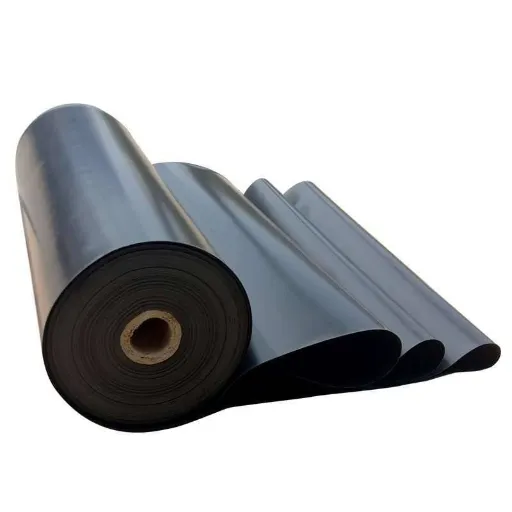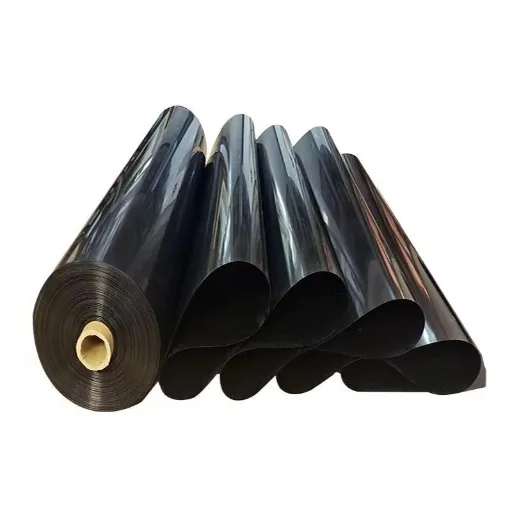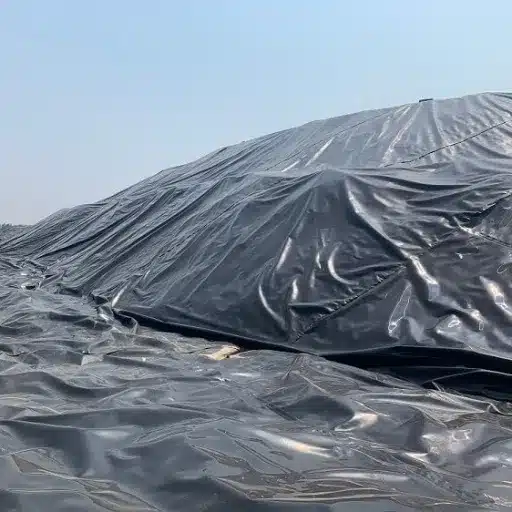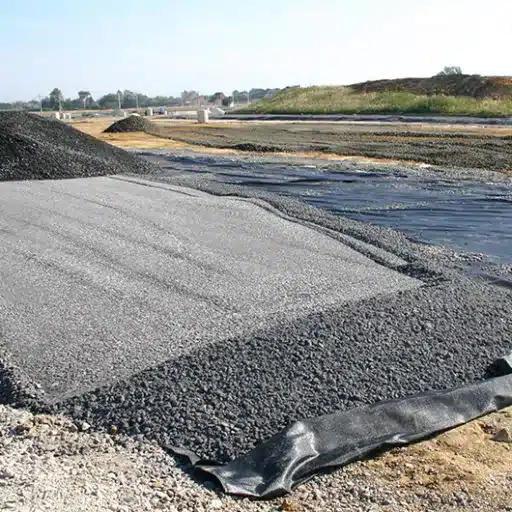Maintaining a beautiful and thriving landscape requires more than planting and watering-it asks for an effective weed control. Unwanted weeds can swiftly take over your garden by absorbing nutrients, sunlight, and water from your plants. Now, that is what a weed barrier fabric is for. These great inventions prevent weed growth and, at the same time, provide a healthy atmosphere for the plants. This guide will feature the best weed barrier fabrics available in the market to help you pick the right one for your gardening or landscaping needs. Whether you’re a professional landscaper or an enthusiastic homeowner with a garden out there, this article will provide you with all the insight required to make a wise, well-informed decision for a weed-free and flourishing outdoor space.
Understanding Weed Control Fabric
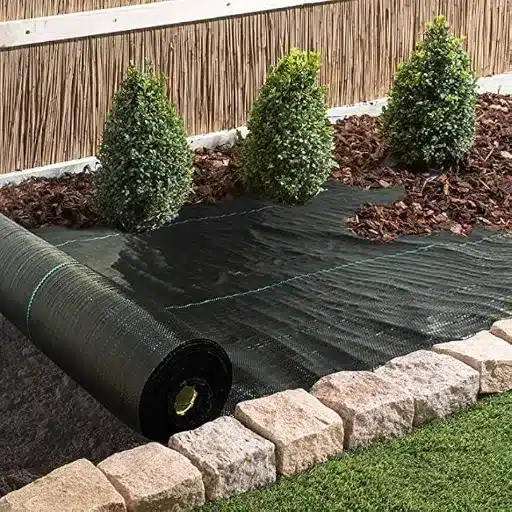
Such cloth is a very sturdy material, designed to block sunlight from reaching the soil so that weed growth is hindered while water and nourishment can pass through. A proper tool for a well-kept flower garden or landscape requiring least maintenance.
What Is Weed Barrier Fabric?
Weed barrier fabric is composed of various materials designed to inhibit weed growth while permitting air, water, and nutrients to reach the soil. It acts as a barrier to keep weeds physically separated from soil, thus limiting the use or dependency on chemical herbicides and manual weeding. Most commonly made of polypropylene or polyester, these fabrics have different weights and constructions, each offering a different degree of value, durability, and effectiveness.
💡 Key Fact: Recent gardening studies have pointed to a 90% reduction in weed growth if the weed barrier fabric is used appropriately and properly witnessing its higher efficacy.
These fabrics are used to create elegant gardens, flower beds, and minutely maintained landscapes; useful also to conserve moisture within the soil. The more Wake-wound types of weed barriers are very popular because they do not compromise soil health by choking weed growth, thereby allowing water and air to pass freely without restricting soil compaction.
Significance of Weed Control in Landscapes
Weed control is the key to establishing a landscape because weeds directly impact the nutrition and looks of the outdoor environment. Weeds grow, competing with the desired plants for sunlight, nutrients, and water. Left unchecked, the weed will take over in no time, preventing flower, shrub, and grass growth, leading to an ugly landscape. Evidence shows that inadequate weed control can diminish crop yields by 34%, which means weeds have an adverse effect on plant development even from far.
Economic Impact
The United States spends over $11 billion annually in fighting invasive weeds and associated impact.
Yield Protection
Inadequate weed control can diminish crop yields by up to 34%.
Good weed control aids in restricting the spread of invasive species that could harm native plants and disrupt ecosystems. Therefore, proper weed control measures, such as employing good quality weed barrier fabrics or using organic and targeted herbicide options, would go a long way in helping reduce the daunting hours spent hand-weeding by homeowners and landscape professionals while at the same time ensuring long-term balance in the ecology of their yards and gardens.
The opposite also goes for better soil quality due to a weed-free environment. Weed roots that go deep leech down soil nutrients swiftly, not leaving much for the needed plants. There are records that planned weed control methods such as mulching and fabric barriers could improve soil nutrition by preventing erosion and retaining moisture. Therefore a strong commitment to weed control is an essential step toward the creation of both attractive and sustainable landscapes.
Types of Weed Barrier Fabrics
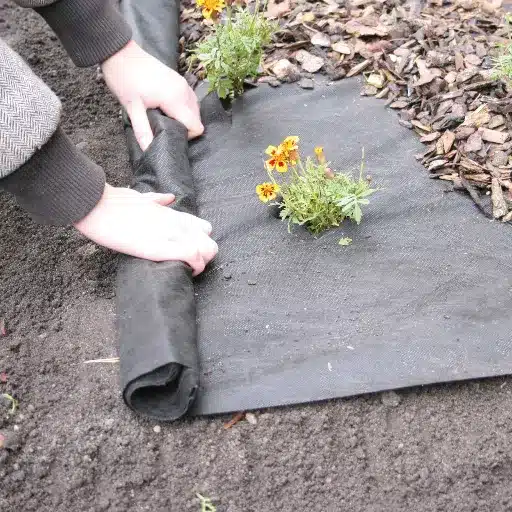
Weed barrier fabrics, also called landscape fabrics, come in several types, each serving determined applications under given environmental conditions. These media suppress weed growth and function to allow air, water, and essential nutrients to reach the soil. Here are the different types of weed barrier fabrics available:
1Woven Weed Barrier Fabrics
Made from very tightly woven fibers of polypropylene or polyethylene, these woven weed barriers are highly durable and perfectly suited for prolonged use in gardens or landscapes. They allow water and air to pass such that they prevent sunlight from affecting the soil behind the barrier, thus stopping weed growth.
Example: 3.0 oz commercial Grade woven fabric that is well known for its high resistance to tearing and UV protection, and thus good for use in resisting the impact of traffic on walkways.
2Non-woven Weed Barrier Fabrics
Unlike woven ones, the bonded polypropylene fiber constructions of non-woven fabrics allow them to retain the moisture better. These are great for water retention applications such as beneath mulch or stones but can somewhat block air and water permeation.
Weight: Being lighter (2.0-2.5 oz) and less costly, non-woven fabrics get commonly tested in places with lesser foot traffic or under garden beds.
3Perforated Plastic Weed Barriers
Perforated weed barriers can allow water and slight airflow through small holes or slits in the plastic sheeting. They do an excellent job of blocking sunlight and are usually placed in vegetable gardens or for specific rows of plants.
Note: These barriers tend to be less friendly to the universe and always make sure gathering water is not happening.
4Biodegradable Weed Fabrics
Made widely from natural materials like jute, coir fiber, or cornstarch, it’s only natural weed fabrics that get biodegraded and cease to exist, depending on them enriching the soil. These ones will not proceed with the life span of synthetic choices, yet are terrific for temporary applications along with organic gardening.
Lifespan: Research suggests they disappear within 6-12 months, depending on conditions like moisture and sun exposure.
Durability and Heavy-Duty Style
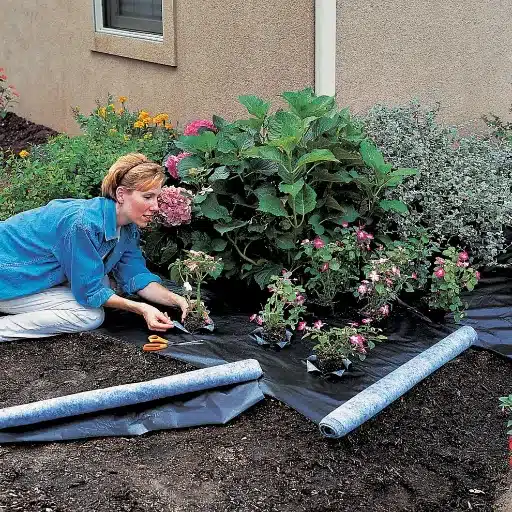
In actual fact, the choice of weed barrier fabric, especially when placement is required in an area that sees a lot of foot traffic or faces adverse environmental conditions, should take into consideration its durability. Heavy-duty ones are apt to endure much wear and tear. They serve as a long-term solution to weed control.
Heavy-Duty Specifications
- Weight: Generally, a 5-ounce or greater grade of fabric is recommended for landscape work to professional standards
- Lifespan: Estimated lifespan of 20 years when the installation is done properly
- UV Protection: Heavy-duty fabrics are also UV-stabilized, which prevents performance degradation from an extended period of sun exposure
- Functionality: Allow water and air to pass through, maintaining soil health while preventing weeds from gaining a foothold
Heavy or heavy-duty weed fabrics are textiles that often have greater tensile strength and greater resistance to punctures than their lighter counterparts, i.e., woven polypropylene.
Product Spotlight
The Dewitt Pro-5 Weed Barrier fabric has been well-rated in terms of its serviceability with durability. In a timely manner, and using their own data, the manufacturers claim that the fabric has a high flow rate, which for the human eye means it supports air and water passage, while cutting off sunlight to render the weed itself a no-grow zone.
Along the same lines, heavy non-woven geotextile fabrics stabilize soil in sites afflicted with erosion and weed growth problems.
Water Permeability and Air Circulation
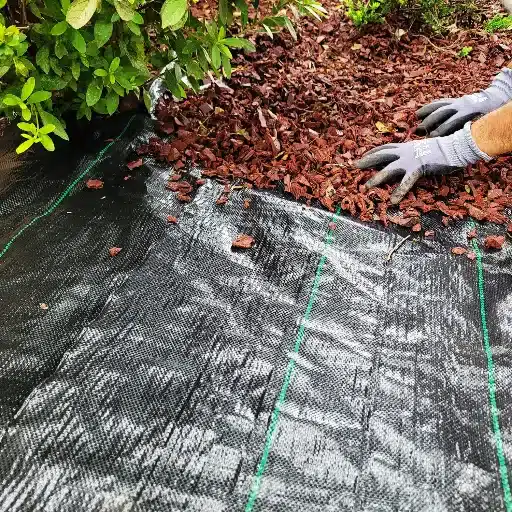
Armed with the ability to stop weeds from growing while allowing water permeability and air circulation, a quality weed barrier fabric is desired. Water permeability is important to keep soil under the fabric hydrated and support healthy root systems for the plants you want to nurture.
| Feature | Benefit | Research Data |
|---|---|---|
| Water Permeability | Keeps soil hydrated and supports healthy root systems | Porous fabrics can hold as much as 90% of natural rainfall |
| Air Circulation | Ensures microbiologic activity within the soil | Allows oxygen penetration, nurturing beneficial microorganisms |
| Optimal Permeability Rate | Balances weed blockage, soil hydration, and breathability | At least 5 gallons per square foot per minute |
Studies indicate that such porous fabrics can hold as much as 90 percent of natural rainfall, thus negating the need for supplementary irrigation systems in gardens and landscapes.
However, air circulation is equally important for ensuring microbiologic activity within the soil. The microporous fabric allows oxygen penetration, which in turn nurtures the growth of beneficial microorganism cells, creating nutrient-rich ecosystems within the soil. Studies show that the weed barrier fabric with a permeability rate of at least five gallons per square foot per minute offers a reasonable balance among weed blockage, soil hydration, and breathability.
Installation Expert Tips
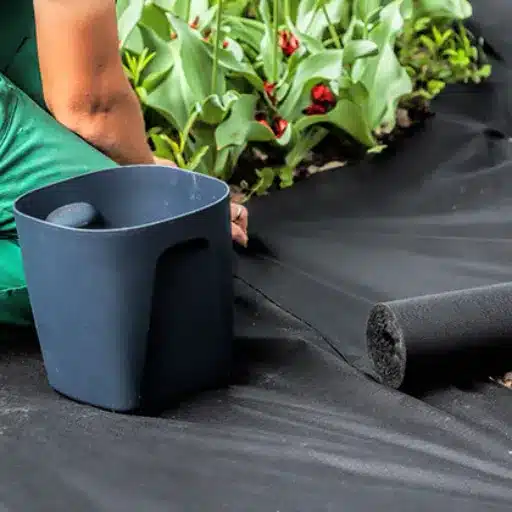
Give clearing any debris or existing weeds in the area so that the installation will go properly. Next, proceed with laying the fabric flat and secure it with landscape staples for added stability which prevents shifting during installation. Overlapping the edges of the fabric is vital to avoid gaps through which weeds can grow. Cut holes for plants through the fabric only where absolutely necessary. Next, cover the fabric with mulch or gravel to protect it from sunlight, which would otherwise reduce its durability.
Preparing Your Garden Bed
The preparation of your garden bed will be necessary to maintain the best possible growth and productivity for your plants. Begin by choosing a site that receives enough sunlight; most vegetables and flowers require a minimum of 6 to 8 hours of direct sunlight per day. Next, you should go ahead and remove any weeds, grass, or debris from the area so that it provides a clean slate for planting. It is also crucial to enhance the quality of your soil: mix organic compost with aged manure or some soil amendments to enrich the soil so that it drains better. Ideally, the pH should be maintained between 6.0 and 7.0 because most plants grow well in a slightly acidic to neutral environment.
For the extra protection of your garden bed and the discouragement of weed growth, it is one more option you may wish to consider: using a quality landscape fabric like ECOgardener Premium Weed Barrier.
✅ Some studies have indicated that effective weed barriers may help reduce the need for manual weeding by up to 90%, saving one much manual labor and promoting healthier plants.
For proper installation, cut the fabric to fit in the bed and secure it down with landscape staples. Finally, place a layer of mulch over the fabric about 2–3 inches-thick; mulch is excellent for retaining moisture, regulating temperature, and improving visual appeal. This way, your garden bed will be ready to nurture gorgeously thriving plants throughout the growing season.
Layout Tips for Landscape Fabric
The effective and proper laying of landscape fabric must take into consideration that it brings maximum benefits and viability for a longer period. Here are some steps to follow for optimum operation:
1Preparing the Soil
Prepare your soil by clearing any weeds and rocks from the area, followed by the smoothing of the surface and leveling of the soil to remove any uneven spot where water could collect. Add a layer of compost or fertilizer to enrich the soil before covering.
2Selecting the Right Fabric
Go for a high-quality landscape fabric that is UV-resistant and heavy-duty, designed to withstand environmental conditions. Ideally, choose a fabric with good permeability so water and air can get through to the soil but which also offers the best prevention against weed growth.
3Cutting and Placing the Fabric
Measure and cut the fabric for your garden bed. When overlapping, make it at least 6–12 inches to prevent any gaps in which weeds might grow. Lay the fabric over the prepared soil and finish with care to avoid anything like folds or wrinkles.
4Securing the Edges
Pin or staple the fabric down along the edges to secure it to the ground. Staples or pins should be every 12 to 18 inches along the perimeter and at any overlap seams. For additional stability, more pins or staples may be used in the middle of the fabric layer.
Conclusion and Recommendations
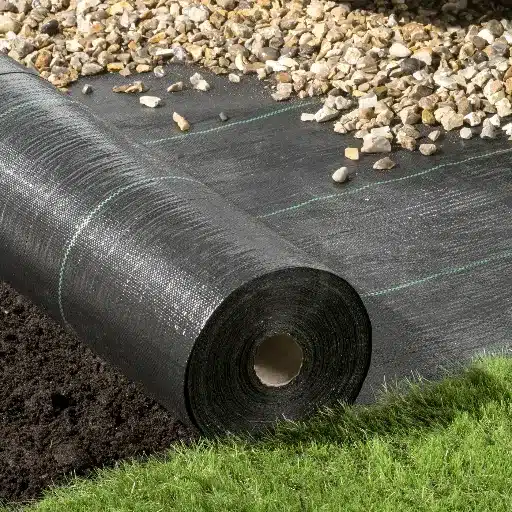
Summary of Key Takeaways
🌱 Enhanced Soil Health
Mulches such as wood chips prevent weeds from growing while decomposing to release nutrients into the soil.
Research shows organic mulches improve soil organic matter content by as much as 10%, leading to healthier yields.
🚫 Effective Weed Control
With the weed control fabric installed under the layer of mulch and gravel, maximum weed control can be achieved.
Studies prove this method reduces weed invasion by more than 90%, reducing herbicide application and manual eradication.
💧 Water Conservation
A mulch layer minimizes direct surface evaporation by allowing water retention in the soil.
According to USDA, the amount of water lost from soil surface can be reduced by up to 25% through surface mulching.
🏞️ Landscaping Benefits
Combining gravel with organic mulch makes the landscape eye-pleasing while enhancing durability.
Gravel facilitates water drainage, preventing soil erosion and pooling.
More Products for Sustainable Gardening
Spreading the word about sustainable gardening is made smooth with these fabulous gardening products. Here are a few must-haves to complement your gardening experience:
🍂 Mulches and Organic Soil Enhancers
Wood chips or straw reduce water use and the temperature of the soil. USDA studies state that mulched land would retain water at least 25% longer as compared with bare soil, effectively cutting back on its water requirement.
💧 Drip Irrigation Systems
Drip irrigation systems are an efficient way of directing water into the root zone. In the case of an average household, its usage could result in conservation of up to 30,000 gallons of water per annum, as reported by the EPA.
♻️ Composting Bins
Using a well-thought-out composting bin, one can turn organic waste materials into good quality compost. The bins also save the landfill from an unfortunate fate and help enhance soil health without going the synthetic way.
🌿 Native Plants and Seeds
Native plants are usually better adapted to local climatic conditions and less demanding for water and grounds keeping. According to National Wildlife Federation’s research, there might be 50% less water used, matched with favorable support to local biodiversity, by applying native species.
Reference Sources
-
Target’s Weed Barrier Landscape Fabric Section
Target – Weed Barrier Landscape Fabric
This source offers a variety of weed barrier fabrics from trusted brands, showcasing their features, sizes, and materials for effective weed control and landscaping. -
Heirloom Soul Blog – The Best Landscape Fabric for Killing Weeds
Heirloom Soul – Best Landscape Fabric
This blog provides insights into the best landscape fabrics, including commercial-grade options, and their applications under gravel and other landscaping scenarios. -
Burpee’s Weed-X Premium Landscape Fabric
Burpee – Weed-X Premium Landscape Fabric
This source highlights the features of Weed-X Premium Landscape Fabric, which has been tested by universities and rated highly for weed prevention.
Frequently Asked Questions (FAQs)
🌿 Ready to transform your landscape with the perfect weed barrier solution? Choose quality fabrics that work with nature, not against it! 🌿

